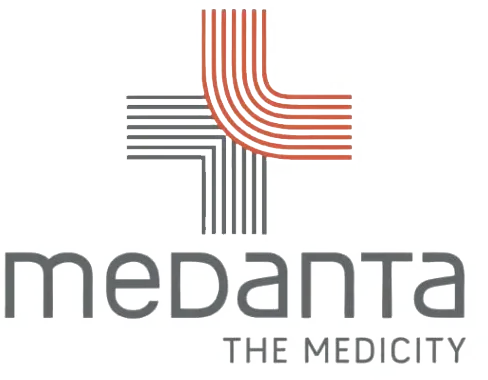Dr. Belal Bin Asaf
Thoracic (Chest) Surgeon
Director, Institute of Chest Surgery,
Chest Onco-Surgery & Lung Transplantation, Medanta Hospital

Dr. Belal Bin Asaf
Thoracic (Chest) Surgeon
Director, Institute of Chest Surgery,
Chest Onco-Surgery & Lung Transplantation, Medanta Hospital

If you or a loved one has been diagnosed with a mediastinal tumour, it is natural to feel anxious. I have treated hundreds of patients with these conditions over my 15 years in thoracic surgery, including some of the most complex anterior, middle, and posterior mediastinal masses / tumours.
My goal is to provide accurate diagnosis, advanced minimally invasive or robotic surgery, and coordinated multidisciplinary care so that every patient receives world-class treatment close to home in Noida and the Delhi NCR region.
The mediastinum is the central compartment of the chest between the two lungs. It also can be understood as a space inside our chest cavity between the breast bone (sternum) and the vertebral column. It houses critical organs and structures including the thymus gland, lymph nodes, windpipe (trachea), food pipe (esophagus), heart and major blood vessels, and nerves.
A mediastinal tumour is any abnormal growth that arises in this space.
Some tumours are benign (non-cancerous), while others are malignant (cancerous) and may spread or compress vital structures.

Mediastinal tumours are often classified by their location:
Middle Mediastinal Tumours: These include tumour or cysts that arise from the middle or central part of mediastinum. This space is occupied by heart and the major blood vessels and the trachea (wind pipe and bronchus). Examples of Middle Mediastinal Mass Include:
The space between the heart and the spine, running along the back of the chest. The Major contents of this compartment include various nerves (sympathetic chain, intercostal nerves), Spinal nerve roots, Esophagus (food pipe), Thoracic duct (lymphatic channel). Tumours arising in this space are known as Posterior Mediastinal Tumours and include
Who Is at Risk of Developing Mediastinal Tumours?
Although mediastinal tumours can develop at any age, their likelihood and type vary with age, sex, and underlying health factors. Understanding these risk patterns helps patients and families recognise the need for timely evaluation and appropriate referral.
Gender Differences
Autoimmune and Genetic Associations
Environmental and Lifestyle Factors
Unlike lung cancer, most mediastinal tumours are not caused by smoking, air pollution, or occupational exposures. There is no proven link with diet, exercise, or common environmental carcinogens.
A few observations:
Key Takeaways for Patients
Symptoms and Warning Signs
Some mediastinal tumours are found incidentally on chest X-ray or CT scans done for other reasons.
Others produce symptoms due to compression of nearby structures:
Seek urgent medical attention if you experience sudden breathing difficulty, swelling of the neck/face, or severe chest pain.
How We Diagnose Mediastinal Tumours
Accurate diagnosis is critical because not all mediastinal masses need surgery first.
Step-by-Step Evaluation
Key principle:
Tumours like lymphoma or germ-cell tumours usually need a biopsy first because their primary treatment is not surgery. Tumours like thymoma or neurogenic tumours are best treated with complete surgical removal.
Treatment Approach at Medanta Noida
We follow an individualised, tumour-specific strategy:
Surgery
For most thymomas, thymic cysts, teratomas, and neurogenic tumours, surgery is the mainstay.
I specialise in robotic and minimally invasive thoracic surgery (VATS), which offers:
Non-Surgical Treatments
Multidisciplinary Care
At Medanta Noida, each case is reviewed by a Thoracic Tumour Board comprising thoracic surgeons, oncologists, radiologists, pulmonologists, and pathologists to ensure the most appropriate, evidence-based plan.
Recovery and Follow-Up
Prognosis
Prognosis depends on:
Early-stage thymomas, benign neurogenic tumours, and cystic lesions have an excellent prognosis when completely removed.
Aggressive tumours such as thymic carcinoma or lymphoma require combined therapies, but outcomes have significantly improved with modern protocols.
Myths vs Facts
| Myth | Fact |
|---|---|
| “If it’s not causing symptoms, I can ignore it.” | Many mediastinal tumours silently grow and can compress vital organs or become invasive. Timely evaluation is crucial. |
| “All mediastinal tumours are cancer.” | Many are benign and can be completely cured by surgery. |
| “Big surgery means long painful recovery.” | Robotic and VATS surgery allow early mobilisation and quicker return to normal life. |
Why Choose Medanta Noida for Mediastinal Tumours
When to Seek a Specialist Consultation
Book a consultation if you have:
Early evaluation can make surgery simpler, safer, and more effective.